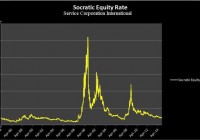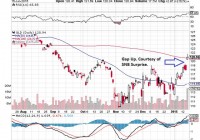All serious investors investing for their future should subscribe to and read this weekly newspaper. Barrons is an antidote to main-stream financial news media that carries articles with screaming headlines of euphoria or disaster that intimidates investors. Barrons uses analysis and facts in addition to speaking with some of the most respected investors on Wall Street when setting out their opinions. Barrons follows up their stock picks periodically with continued analysis as to why they were right or wrong in addition to whether such picks are still valid. Barrons provides information, market data and columns covering all aspects of the U.S. economy and markets, world markets and other useful commentary. Many years ago we knew someone who was an equity-derivatives trader on Wall Street. That trader, who made almost $1 million in a year at the age of 27, told us we should read The Economist and Barrons each week. We read The Economist for a year or so, but the volume of reading required each week was overwhelming. Then, however, we started reading Barrons and we have never stopped. Barrons’ regular subscription cost is about $200 a year, but the publisher is always running special subscription offers. Currently an investor can obtain their first 26 weeks for $1 a week. We purchased our current Barrons subscription using 1900 airline miles. However you pay for Barrons, we believe all that serious investors investing for their future should subscribe to and read this weekly newspaper that arrives on Saturday mornings. We are not alone in our appreciation for Barrons. Here are some other articles discussing why Barrons is a valuable financial resource and how a reader should use the information contained within. Why we read Barrons generally As readers of our articles know, we do not look highly upon the most mainstream of financial-news-media outlets. Mainstream financial news media includes CNBC, Fox Business News and any news feed Internet financial web site that carries articles with screaming headlines of euphoria or disaster. Such mainstream financial media is not designed to truly help individual investors in a calm and sober manner. Rather, such mainstream financial news is designed to attain large viewership numbers. In our minds, mainstream financial media is on par with tabloid journalism. Harsh? Yes, but all too true. Barrons is different in that whether their news is bullish or bearish, they do not hit the reader over the head with histrionic language. Rather, Barrons uses analysis and facts in addition to speaking with some of the most respected investors on Wall Street when setting out their opinions. In addition, they have cartoons on par with New Yorker magazine to make you smile even when your recent investment performance is making you frown. In this article, we will briefly discuss why we read Barrons specifically. 1 – Up and Down Wall Street This article basically outlines the mood of overall markets, world economies and politics. This section is valuable to establish an overall investment mood for readers. This article typically starts with outlining the previous week’s trading and then interweaves economic data, political news both American and Foreign, significant events and commentary by well-known Wall Street players to establish a current mood for past week of trading and the mood that may lead off the upcoming week of trading. Reading this article is a must. 2 – Follow up to Barrons stock picks One thing you will rarely if ever see in the majority of financial publications is a follow up to buy and sell recommendations with regard to individual stocks, industry-related groups of stocks or overall market calls. Barrons is different. Barrons periodically reviews their stock picks whether they were good or bad calls. In a Barrons follow up, they will either say why a stock continues to be a buy, sell or whether their opinion has changed based on intervening news and set out an explanation for their opinion. Accountability for opinions is a rare commodity, and Barrons willingness to stand behind their successes and failures gives us confidence to consider and act on future Barrons recommendations. 3 – The Trader This article generally begins sets out the recent week’s movements in the market indexes by the numbers and ties in news related events that may have moved the markets up or down. Quotes from well-known Wall Street veterans are frequently set out in the beginning of this article. As this article moves forward there are usually one or two specific stock recommendations that a reader may further research and then act upon. Overall this article is one we read every week. 4 – Insider Transaction filings This section, while small, sets out a small but useful section of the top 20 largest insider buys and sales for the week along with an insider transactions ratio. Although insider transactions are available in many places, we like that the information is gathered all in one small place. In addition, the insider transaction ratio is a chart that indicates whether an overall market mood is bullish or bearish based on recent insider activity. We have used this tiny section successfully as a partial basis for some of our past investment decisions. 5 – Speaking of Dividends This article is valuable in that it recounts the previous week’s dividend activity such as dividend increases, reductions or special dividends. When the previous week did not have a significant amount of dividend news, this article recounts dividend trends in the overall markets that are valuable to consider for any dividend investor. 6 – Market Laboratory Barrons is old school so to speak in that it still gathers a significant amount of economic, commodity, market index, short interest, individual stock, dividend, bond, currency, foreign market and earnings calendar data. While a reader may be able to find much of this data in other places on the Internet, in Barrons, it is all in one place. Not all of the information will be valuable to every reader. We like the earnings calendar announcements, short interest tables, weekly new high/low tables, dividend data and research reports. 7 – 13D Filings A 13D filing is a filing with the Securities and Exchange within 10 days of attaining a greater than 5 percent position of a company’s securities. This information is valuable to investors interested in high or low profile investment stakes built up in a particular company’s stock by an investment entity such as an investment group. 8 – Weekly stock profiles This article or group of articles profiles one or two stocks a week in the small, medium and large capitalization range that provides a valuable starting point for an investor to research new investment ideas. Be careful of buying too quickly though as Barrons profile articles are known to provide a bounce in a profiled company’s stock in the week or so following the profile. A profile of a stock an investor already owns is still valuable as such profile provides a continued thesis for holding a stock into the future. 9 – The weekly headline article The weekly headlines article may focus on individual stocks, industry stocks, mutual funds, economic trends, various economies around the world. This headline article may not always be of interest to a reader but still should be read for the sake of deepening one’s knowledge in regard to various topics as they relate to the U.S. or world economies. 10 – Everything else Not everything in Barrons will interest a reader, but for the sake of completeness and increasing knowledge a reader should try to read most of the articles and columns which tend to run one page or less. There is: 1) Editorial Commentary by Thomas Donlan which tends to express his quite conservative views about politics, business and the economy; 2) D.C. Current by Jim McTague which focuses on American politics and the business world also with a conservative viewpoint; 3) CEO spotlight which focuses on the CEO of a company and their life and the performance and future direction of the company the CEO heads; 4) Technology week which we believe is one of the weakest links in Barrons as this column gushes over Apple, Inc. (NASDAQ: AAPL ) on a seemingly weekly basis; 5) the European Trader, Asian Trader, Emerging Markets and Commodities Corner columns; 6) Current Yield which focuses on bonds; 7) a mutual fund or investment group and their investments along with their outlook for the U.S. and world economies; and 8) Striking Price which focuses on the options market and market volatility. There is more, but to keep this article brief we have set forth the highlights of Barrons. Conclusion We have noticed that many people who have attained some form of monetary “success” either through their own efforts or inheritance read Barrons. We read it because their analysis is intelligent, informed and rational. The articles contained within Barrons address an investor with respect and do not scream their opinions to gain attention. Barrons, however, with their long and storied history is respected, incisive, listened to and quoted on a weekly basis year after year. As such, every investor who seriously wants to succeed for their own well being should read it regularly.

